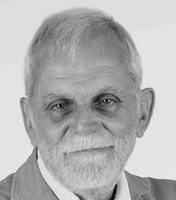- Info
Franco Niccolucci
Direttore, VAST-LAB, PIN, Prato
Franco Niccolucci is the director of VAST-LAB research laboratory at PIN in Prato, Italy. A former professor at the University of Florence until 2008, he has directed the Science and Technology in Archaeology Research Center (STARC) at the Cyprus Institute, Nicosia, until 2013. Prof Niccolucci has coordinated several EU-funded projects on the applications of Information Technology to Cultural Heritage, and is currently the coordinator of ARIADNEplus, a research infrastructure on archaeological data, and director for technology in 4CH, a project to create a European Competence Centre on Cultural Heritage. His main research interests concern knowledge organization of heritage documentation and the valorisation of cultural heritage. He is currently the Editor-in-Chief of JOCCH, the ACM Journal of Computing and Cultural Heritage. He has authored about 100 papers and book chapters.
Smart cities and digital twins
13.30 - 15.00 | Session 1: HERITAGE AND CRISES
The concept of smart city as a city that avails of advanced information technology to collect real-time information on the processes that happen in the urban environment, to simulate the effects of interventions on such processes according to pre-defined schemas, and to manage accordingly the services provided to citizens, is now more than ten years old. Nevertheless, the debate is still open on its critical aspects, among others on those concerning privacy, the prevalence of a technology-driven approach instead of a community-based one, and the potential increase of the divide between different categories of citizens not corresponding to the pre-determined global model on which the smart management is based. On the other hand, information technology is nowadays a pervasive factor of everyday life, and correcting its degenerations is the current approach adopted to protect privacy, to guarantee inclusion, and contrast excesses deriving from misuse. In this short presentation we will start from the consideration that the transparency and public awareness of the model adopted to obtain smartness is the first step to avoid, or at least mitigate, the adverse effects of excessive automation, still retaining its advantages, deriving from the potential beneficial effects of being smart on the quality of life, on the environment and in general to the well-being of citizens. For this, we will briefly analyse the concept of the digital twin of a city as a prerequisite to its smartness to foster the transparency of the underlying conceptual model. This includes considering which data are collected and how they are organized, how real processes are simulated, and how the outcomes of such simulation lead to intervention on the real world. In this way we will point out how this approach may well extend from the built environment to the urban one.
